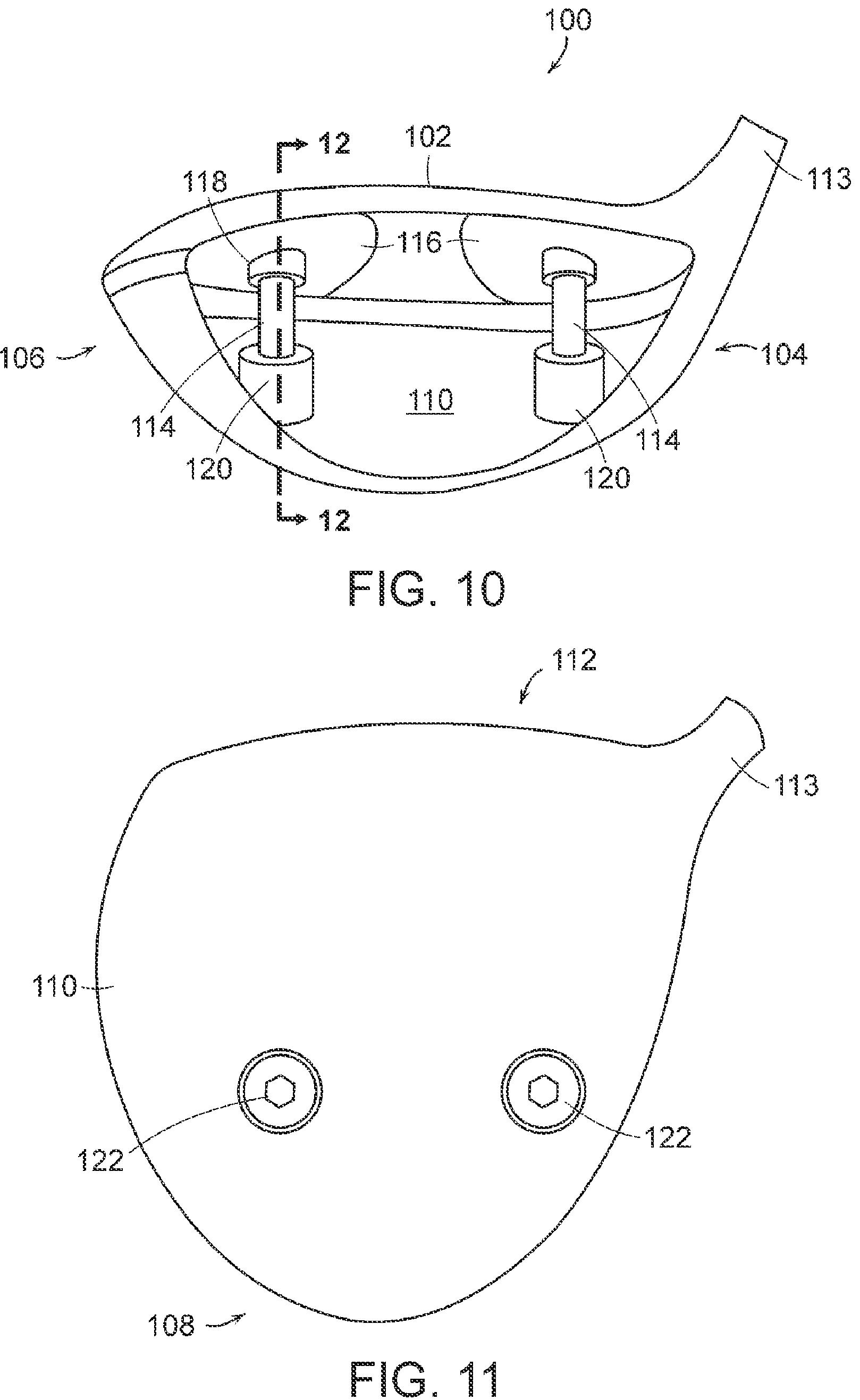Ahh, Is There a Better Sound Than a Purely Struck Drive? You May Soon Be Able to Tune Your Driver
Few things put a smile on a golfer’s face like the sound of a 300 yard drive. Sure, there are a handful of drivers out there that are characterized by a rather unique sound that some, myself included, would say is hideous, but there is no doubt that the sound produced by a driver influences the purchasing decision. Every golf club manufacturer recognizes this fact. Acushnet has gone as far as designing a driver that the golfer can tune to the frequency that they desire. The Acushnet driver is disclosed in a patent application that published this week as US Pub. No. 20090298613 titled “Golf Club Head with Sound Tuning,” which describes the invention as:
Check out this design:

The application goes on to explain:
Pretty cool!
Dave Dawsey - Monitoring Golf Inventions
PS – click HERE to check out additional posts on adjustable drivers
A golf club head with sound tuning. The golf club head includes a hollow body that defines an interior cavity and at least one tuning member extends across the interior cavity. The tuning member dimensions, stiffness and dampening characteristics are selected to alter the vibration behavior of the golf club head.
Check out this design:

The application goes on to explain:
[0002] As the size of hollow golf club heads has increased, weight distribution has become a major design consideration. In particular, in the quest to design in discretionary mass, it has become desirable to decrease the wall thicknesses of the portions that do not contribute directly to improved mass properties. Because of the thin wall and the large volumes of the golf club head, large portions of the heads act as membranes and vibrate relative to each other. In some instances, the vibration takes place at a relatively low frequency that results in unappealing sound during impact between the golf club head and a golf ball.
.
.
.
[0007] The invention is directed to a golf club head with sound tuning so that the vibration characteristics of the golf club head may be altered to produce a desired sound. Several embodiments of the present invention are described below.
[0008] In an embodiment, a golf club head includes a body and a tuning member. The body includes a crown portion and a sole portion and defines an interior cavity. The tuning member extends across the interior cavity and includes a first end that is attached to the crown portion at a first attachment location and a second end that is attached to the sole portion at a second attachment location. The body includes a first distance between the first attachment location and the second attachment location when the body is in a free state, and the tuning member has a length that is greater than the first distance when the tuning member is in a free state.
[0009] In another embodiment, a golf club head includes a body and a curved tuning member. The body includes a crown portion, a sole portion, a toe portion extending between the crown portion and the sole portion and a heel portion extending between the crown portion and the sole portion and defines an interior cavity. The curved tuning member extends across the interior cavity and a first end of the tuning member is attached to the crown portion at a first attachment location and a second end of the tuning member is attached to the sole portion at a second attachment location. The tuning member is oriented so that it is curved away from the nearest of the toe portion and the heel portion.
[0010] In a further embodiment, a golf club head includes a body, a cover and a tuning member. The body includes a crown portion and a sole portion and defines an interior cavity. An aperture extends through the sole portion. The cover is removably coupled to the sole portion in the aperture. The tuning member extends across the interior cavity and a first end of the tuning member is attached to the crown portion at a first attachment location and a second end of the tuning member is attached to the cover.
Pretty cool!
Dave Dawsey - Monitoring Golf Inventions
PS – click HERE to check out additional posts on adjustable drivers

Comments